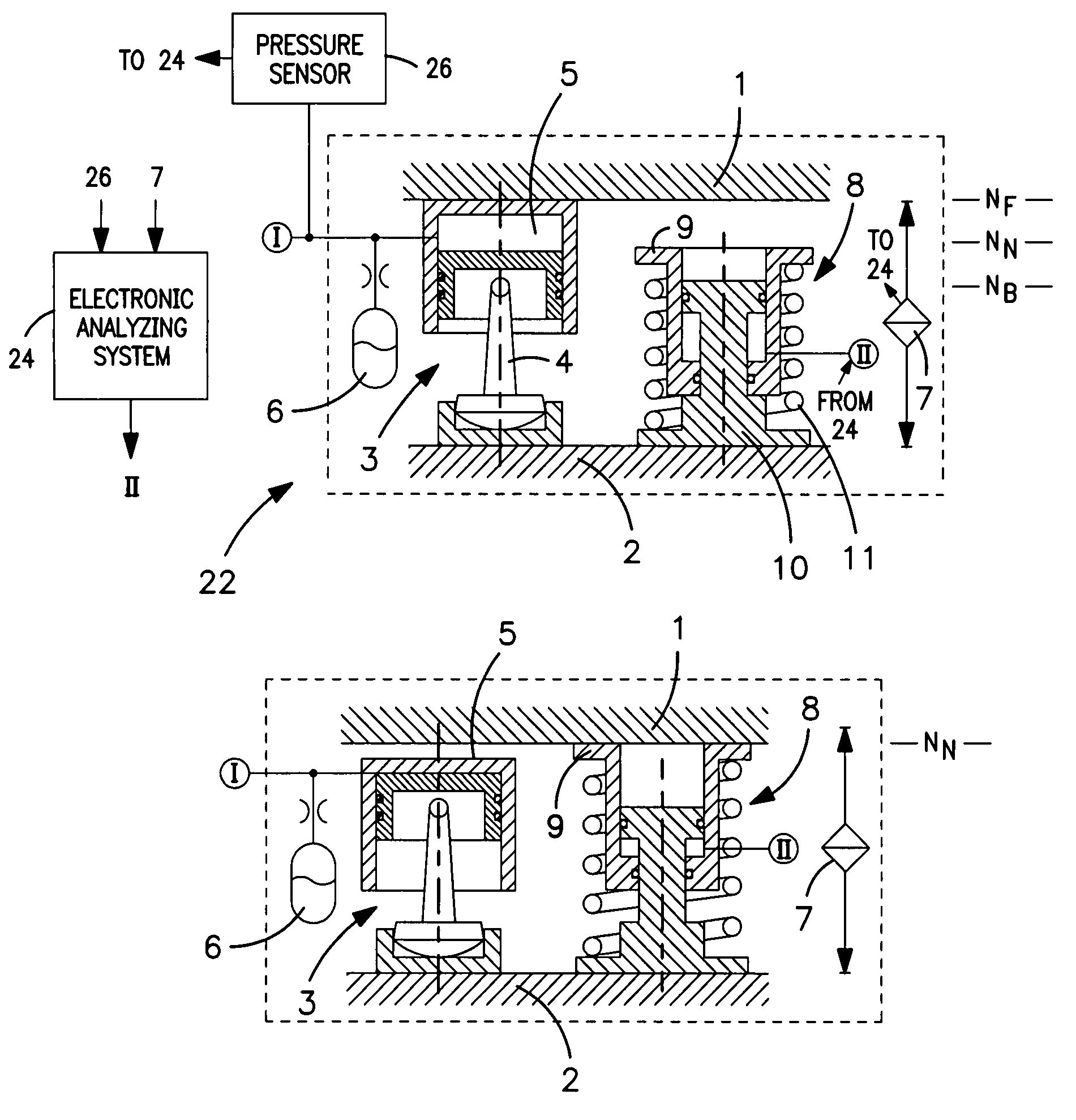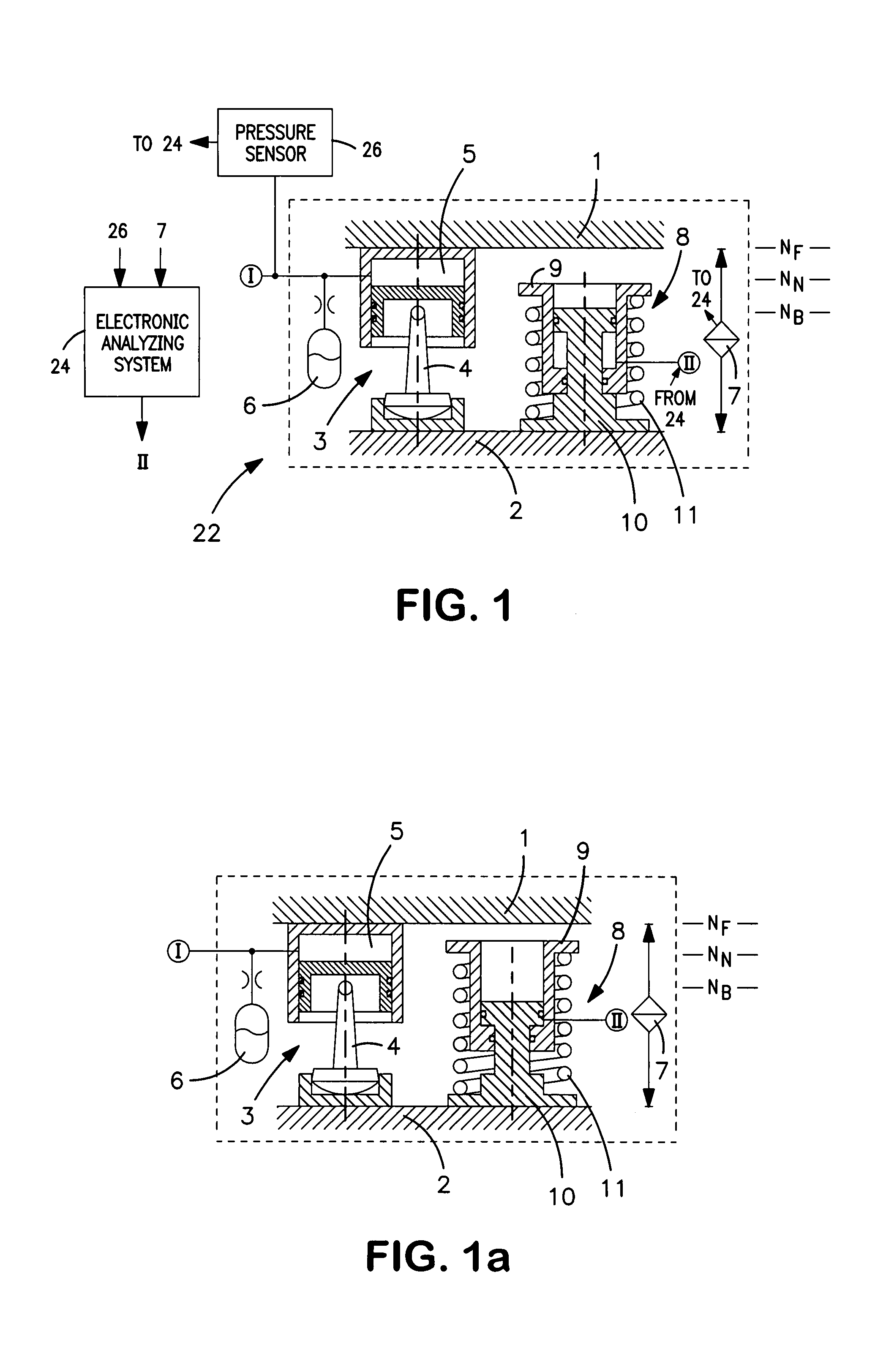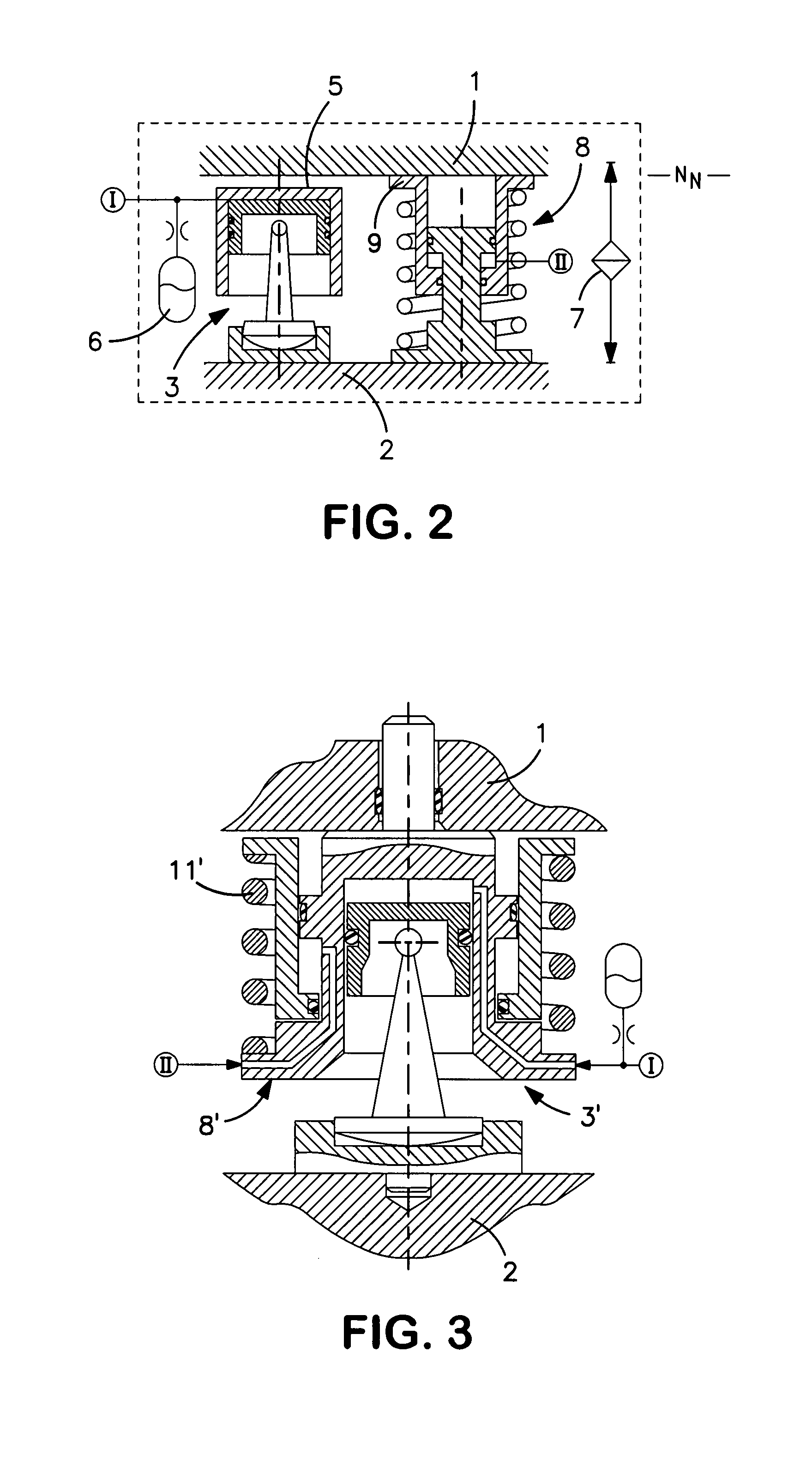System for the secondary suspension of a superstructure of a rail vehicle having an active spring element
a technology of secondary suspension and superstructure, which is applied in the direction of resilient suspension, bogie-underframe connection, vehicle spring, etc., can solve the problems of lowering the superstructure and changing the superstructure level, and achieves high spring force, lowering the level of the station platform, and increasing the rigidity of the springs.
- Summary
- Abstract
- Description
- Claims
- Application Information
AI Technical Summary
Benefits of technology
Problems solved by technology
Method used
Image
Examples
Embodiment Construction
[0038]In view of FIG. 1, a hydropneumatic spring unit 3, as an active spring element, is arranged between a top superstructure 1 of a rail vehicle partially shown, and a lower bogie 2. When the rail vehicle is traveling for example, in a normal operation, the hydropneumatic spring unit 3 ensures a raised traveling level NF for the superstructure 1, so that the latter remains largely unaffected by disturbing vibrations caused by the travel. By a lower pendulum support 4, the hydropneumatic spring unit 3 simultaneously also takes over or serves as a transverse guidance of the superstructure 1. A pressure chamber 5 of the hydropneumatic spring unit 3 is acted upon by a hydraulic circuit 1. A hydraulic accumulator 6 is connected parallel thereto an integrated gas volume of the hydraulic accumulator 6 ensuring the spring characteristic of the hydropneumatic spring unit 3. As a result of action upon the pressure chamber 5, the distance between the superstructure 1 and the bogie 2 can be v...
PUM
 Login to View More
Login to View More Abstract
Description
Claims
Application Information
 Login to View More
Login to View More - R&D
- Intellectual Property
- Life Sciences
- Materials
- Tech Scout
- Unparalleled Data Quality
- Higher Quality Content
- 60% Fewer Hallucinations
Browse by: Latest US Patents, China's latest patents, Technical Efficacy Thesaurus, Application Domain, Technology Topic, Popular Technical Reports.
© 2025 PatSnap. All rights reserved.Legal|Privacy policy|Modern Slavery Act Transparency Statement|Sitemap|About US| Contact US: help@patsnap.com



